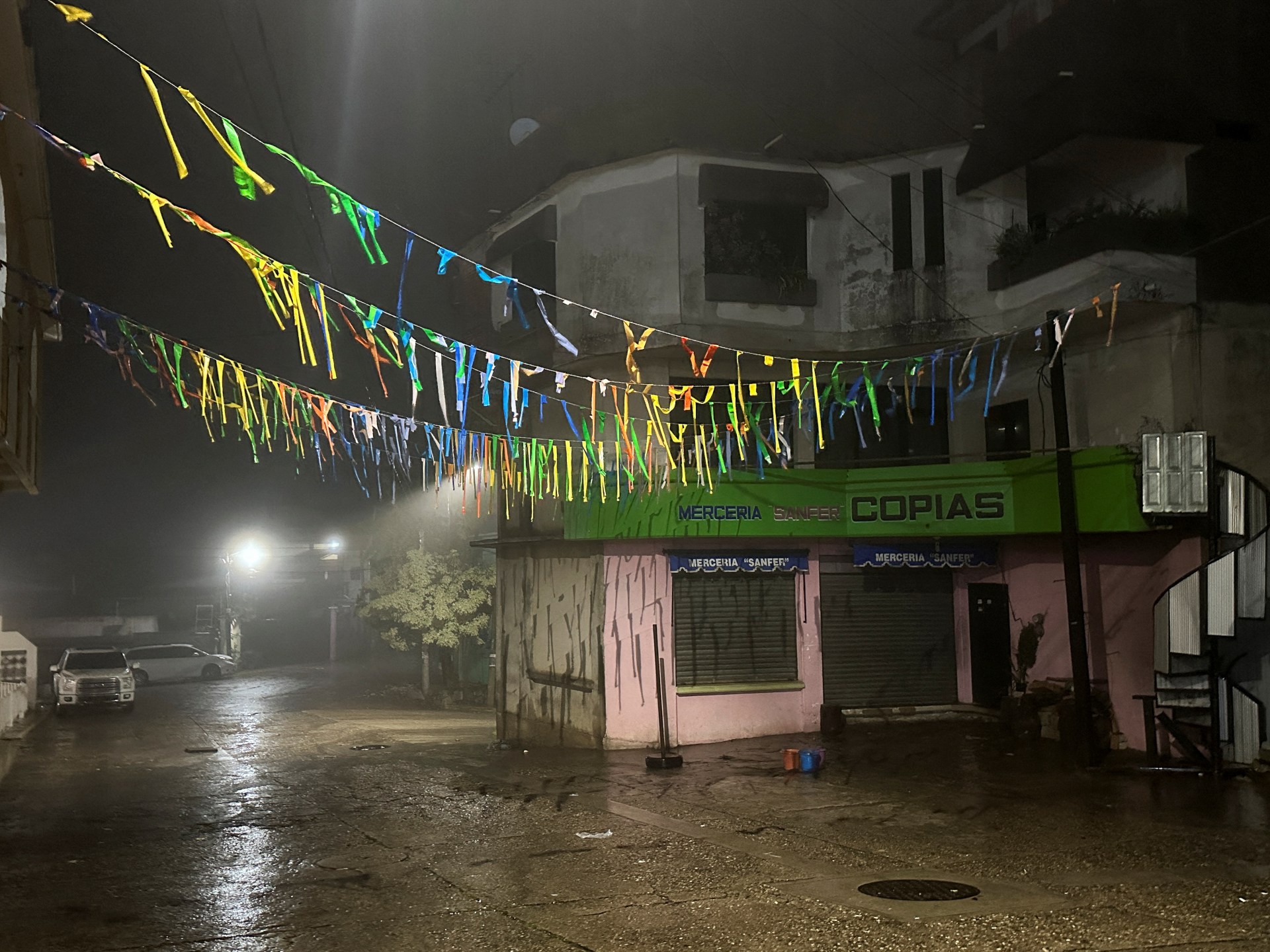Hurricane John hit the same coastal area of Mexico where Hurricane Otis ravaged Acapulco last year, killing 47 people.
Hurricane John has struck Mexico’s southern Pacific coast with fierce winds and heavy rainfall after strengthening from tropical storm to major hurricane in a matter of hours.
John’s rapid intensification caught authorities off guard early Monday as they scrambled to update their guidance to residents and keep pace with the stronger storm.
It made landfall as a Category 3 hurricane with winds of 190km/h (120mph) after rapidly intensifying on Monday.
John hit land near the town of Punta Maldonado in the Mexican state of Guerrero to the south of the tourist hubs of Acapulco and Puerto Escondido, before weakening inland. Forecasters also predict the storm may slow its forward movements as its winds weaken.
Shortly before the hurricane hit, the US National Hurricane Center said “life-threatening” storm surges and flash floods were already ravaging the Pacific coast near Oaxaca. Mexican President Andres Manuel Lopez Obrador and other authorities urged people to take shelter.
“Seek higher ground, protect yourselves and do not forget that life is the most important thing; material things can be replaced. We are here,” Lopez Obrador wrote on the social media platform X.
The hurricane is bleak news for the region, which last year was walloped by Otis, a similar rapidly intensifying hurricane.
Otis devastated the resort city of Acapulco, where residents had little warning about the strength of what was about to hit them. One of the most rapidly intensifying hurricanes ever seen, Otis was flagged by scientists as a product of changing climate conditions.
Otis blew out power in the city for days, killing at least 47 people and leaving bodies scattered on the coast, with desperate family members searching for lost loved ones. Much of the city was left in a state of lawlessness and thousands scavenged in stores, scrambling for food and water.
Rapid intensification more common
The unexpected surge in John’s strength caught scientists, authorities and residents of the area by surprise, something AccuWeather Senior Meteorologist Matt Benz attributed to warmer oceans, which add fuel to the hurricanes.
As a result, surprise surges in hurricanes’ strength have become increasingly common, Benz said.
“These are storms that we haven’t really experienced before,” he said. “Rapid intensification has occurred more frequently in modern times as opposed to back in the historical record. So that’s telling us there’s something going on there.”
Hurricane John struck Mexico’s Pacific coast just as another potential hurricane was developing on its Gulf coast – likely headed for northern Florida, also as a Category 3 event.
Residents were tense in Oaxaca’s coastal cities as the forecast shifted and authorities responded.
Laura Velazquez, Mexico’s federal coordinator of civil protection, told residents of Pacific coastal cities they should evacuate their homes and head to shelters in order to “protect theirs and their family’s lives”.
“It’s very important that all citizens in the coastal zone … take preventive measures,” Velazquez said.
Ana Aldai, a 33-year-old employee of a restaurant on the shores of the tourist hub Puerto Escondido, said businesses in the area began closing after authorities ordered the suspension of all work on the area’s main beaches.

Classes suspended
The governments of Guerrero and Oaxaca states said classes would be suspended in a number of coastal zones on Tuesday.
Oaxaca’s governor said the state government had evacuated 3,000 people, set up 80 shelters, and mobilised 1,000 military and state personnel to address the emergency.
Benz, the meteorologist, expressed concern that Otis could slow once it hits land, leaving the storm hovering over the coastal zone, which could cause even greater damage.
“You’re going to feel the impacts of the storm probably for the next couple of weeks to a couple of months,” he said.
The government of Lopez Obrador received harsh criticism for its slow response to Otis, but authorities have since pledged to pick up their speed.
Mexico’s President-elect Claudia Sheinbaum said her government planned to work on improving an early alert system, similar to what the country has with earthquakes.




![Tyson Foods Plant [Photo: Food Manufacturing]](https://southarkansassun.com/wp-content/uploads/2023/08/iStock_1185520857__1_.5e441daa51cca-600x337.jpg)







![Silverado Senior Living Management Inc. [Photo: Los Angeles Times]](https://southarkansassun.com/wp-content/uploads/2023/10/download-6-4-600x337.jpg)

![China's Wuhan Institute of Virology [Photo: Nature]](https://southarkansassun.com/wp-content/uploads/2023/09/d41586-021-01529-3_19239608-600x337.jpg)
















